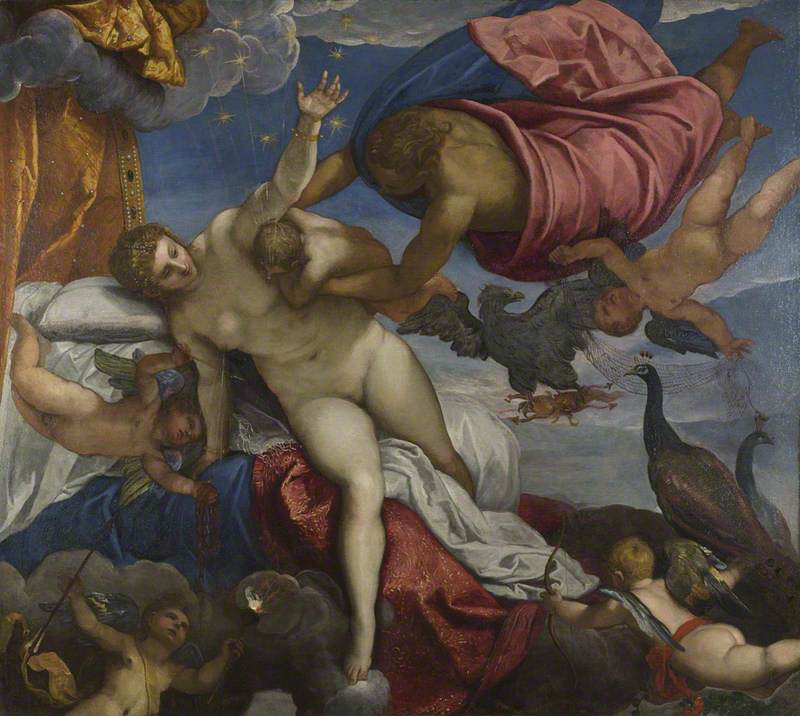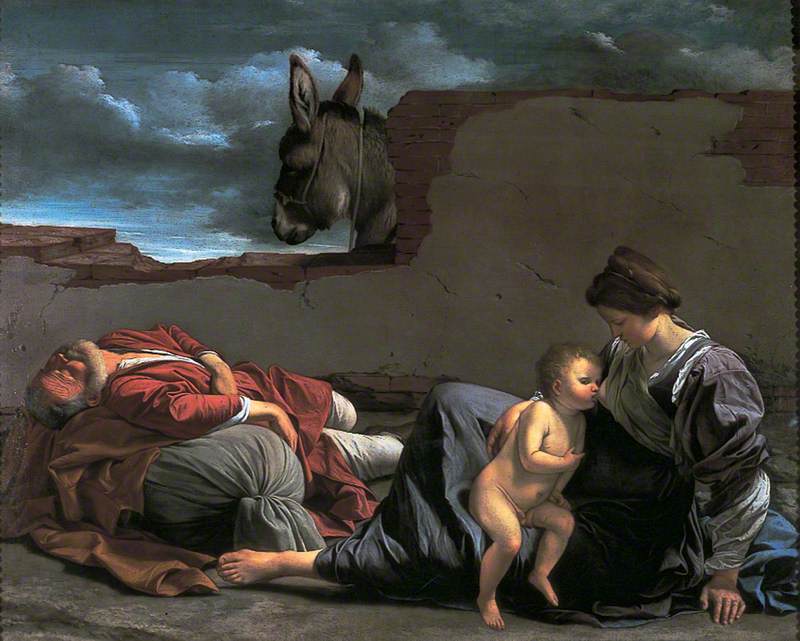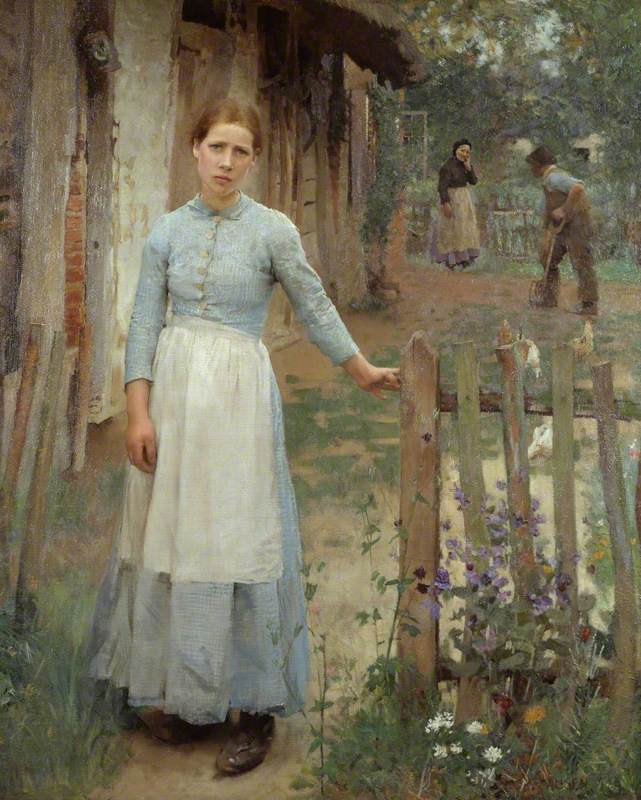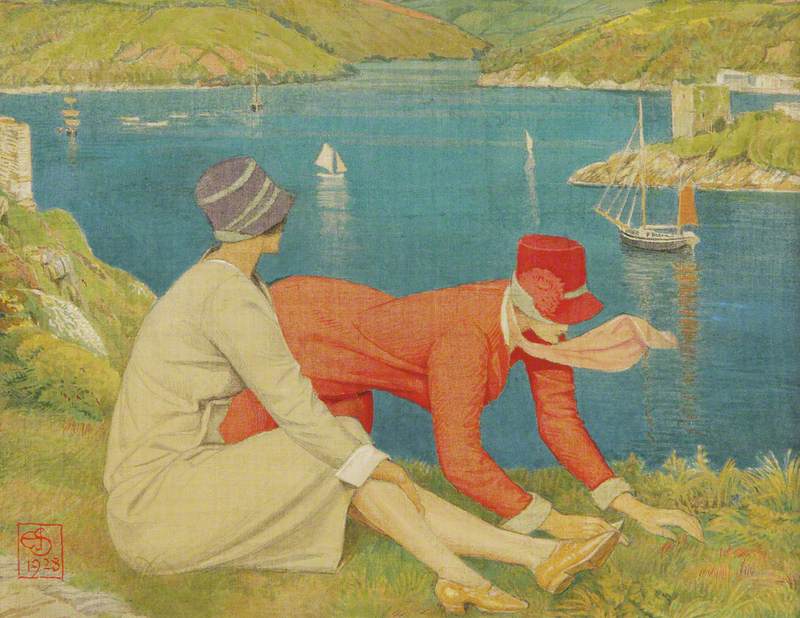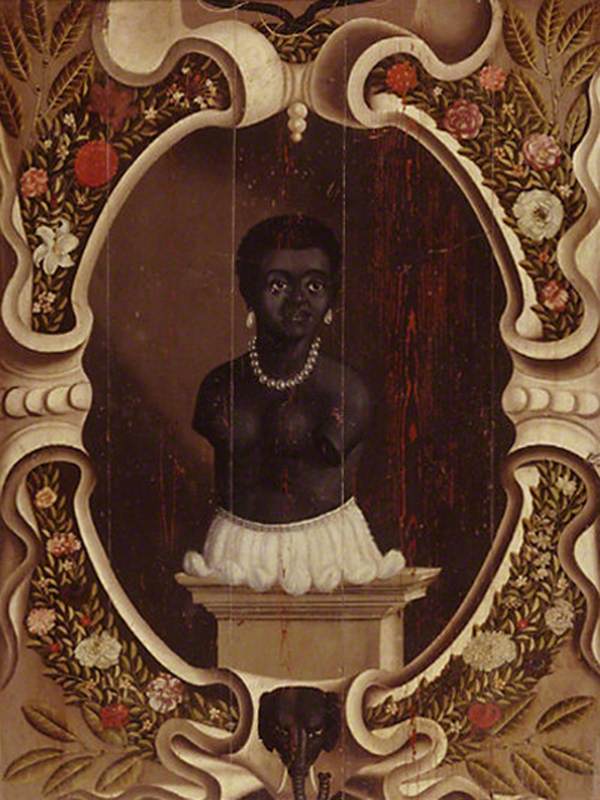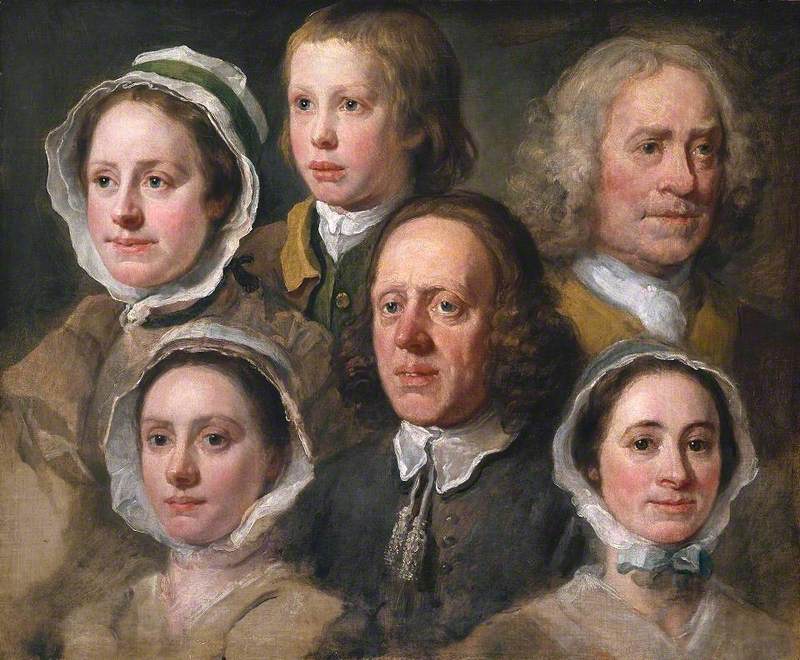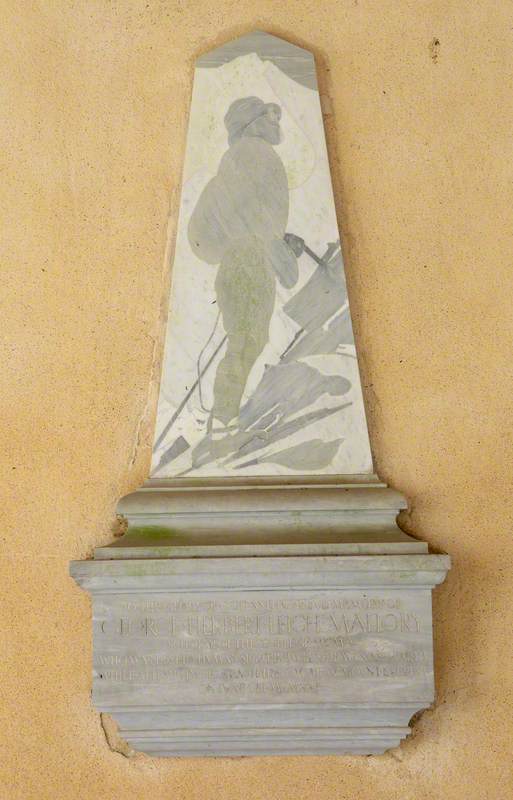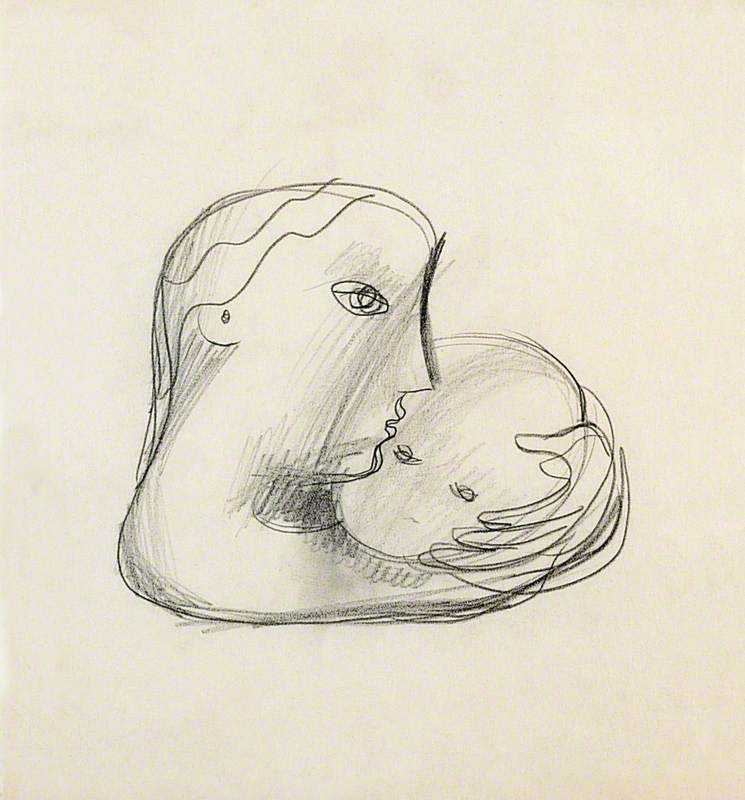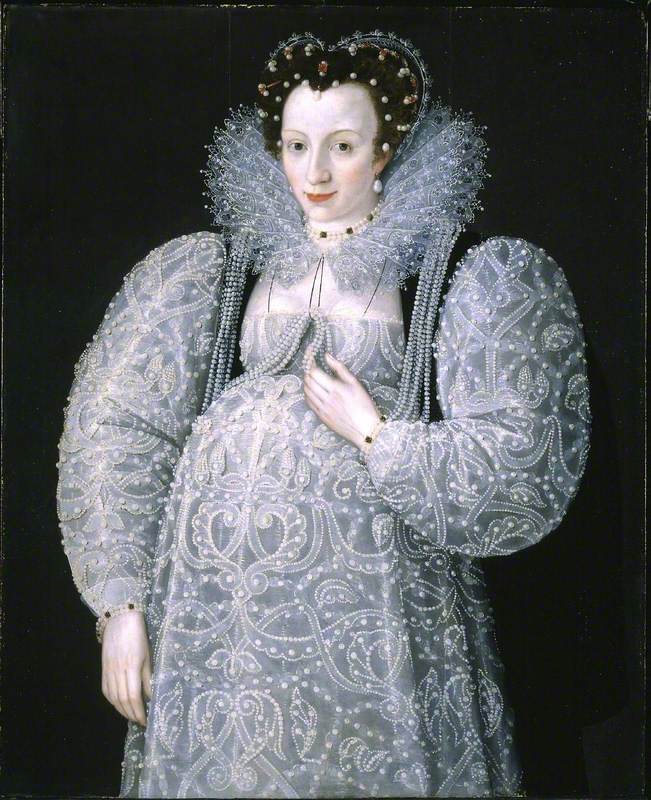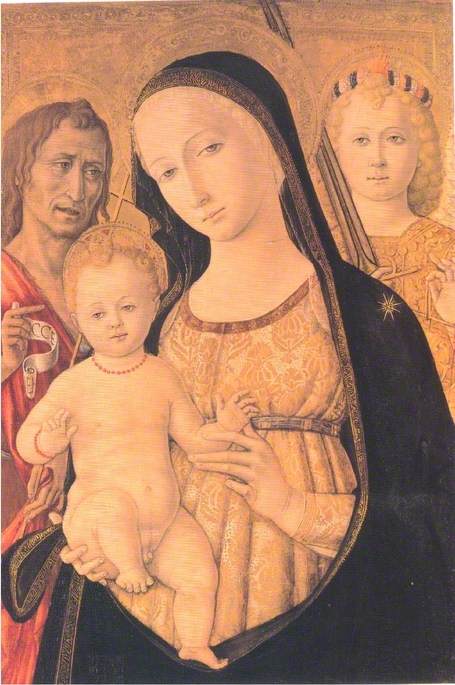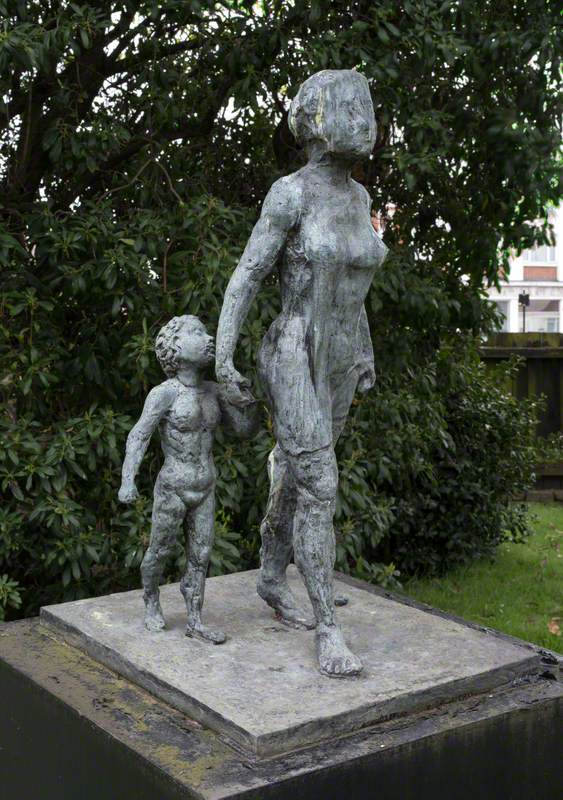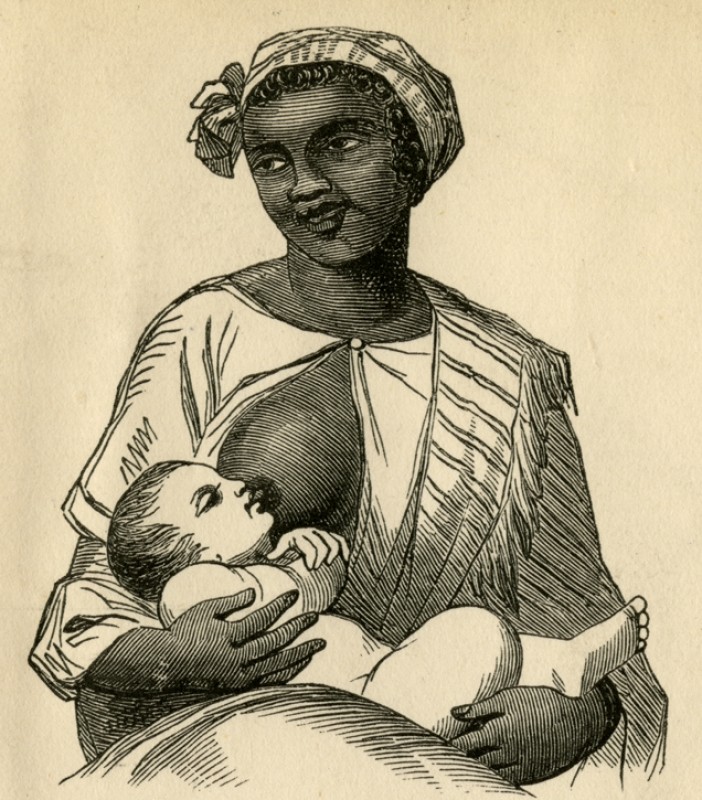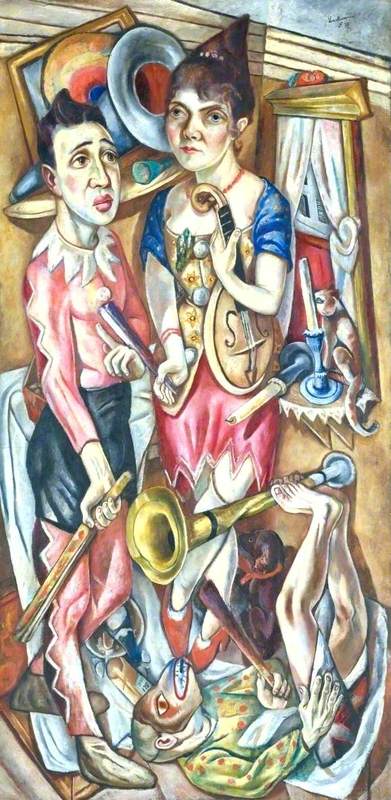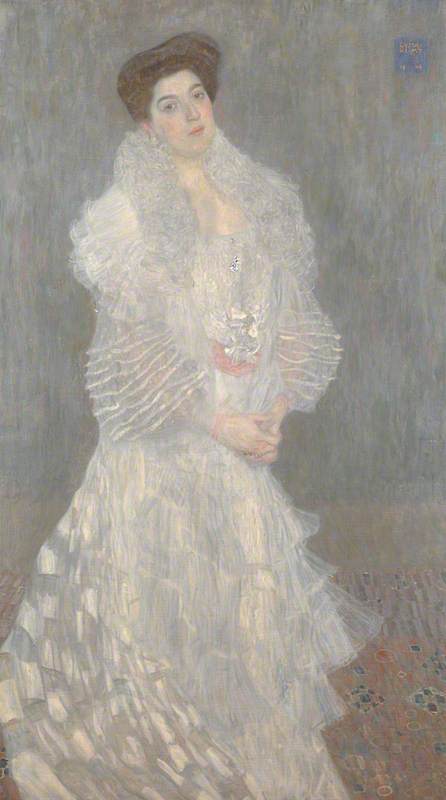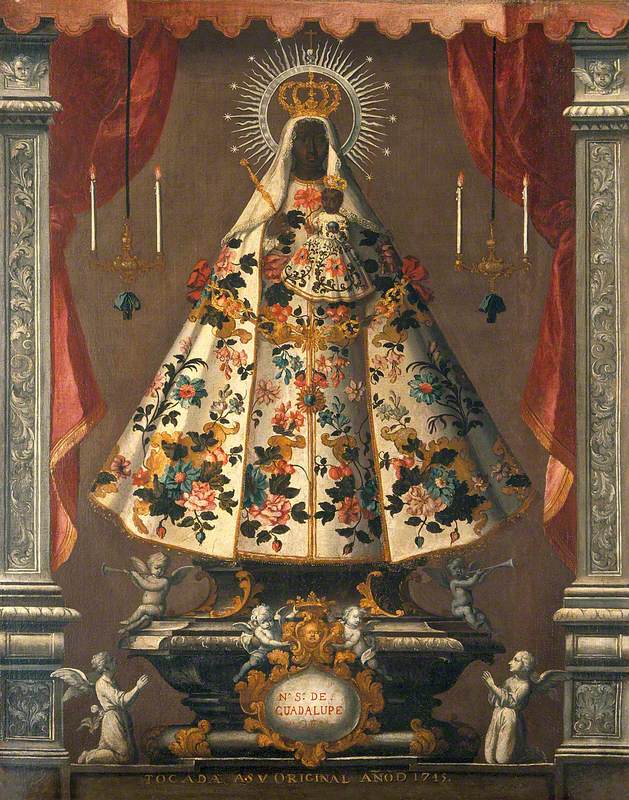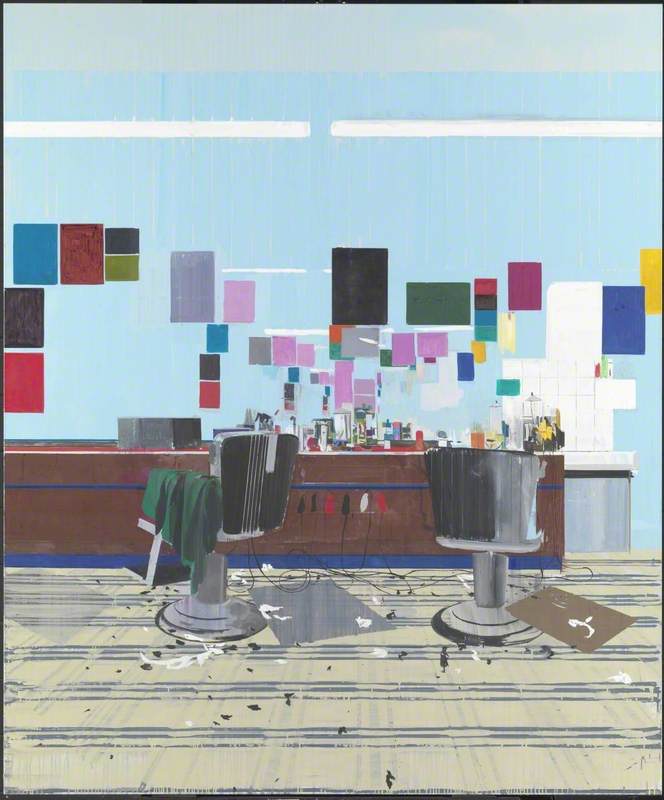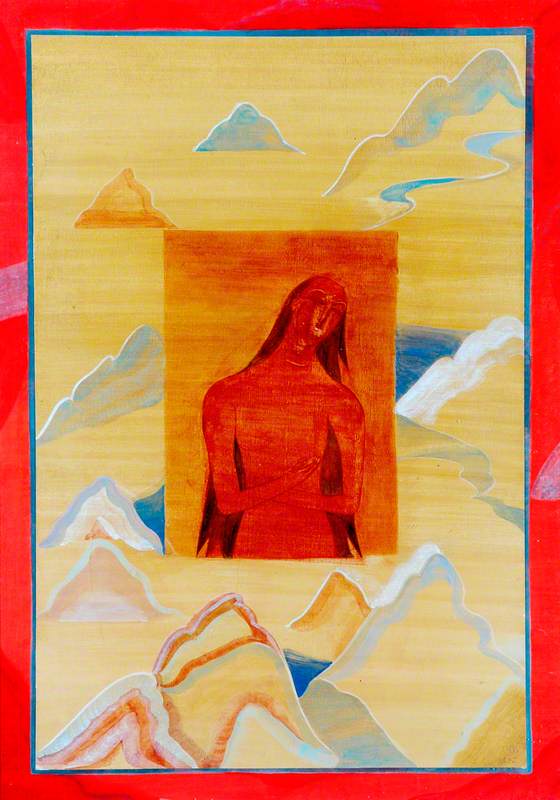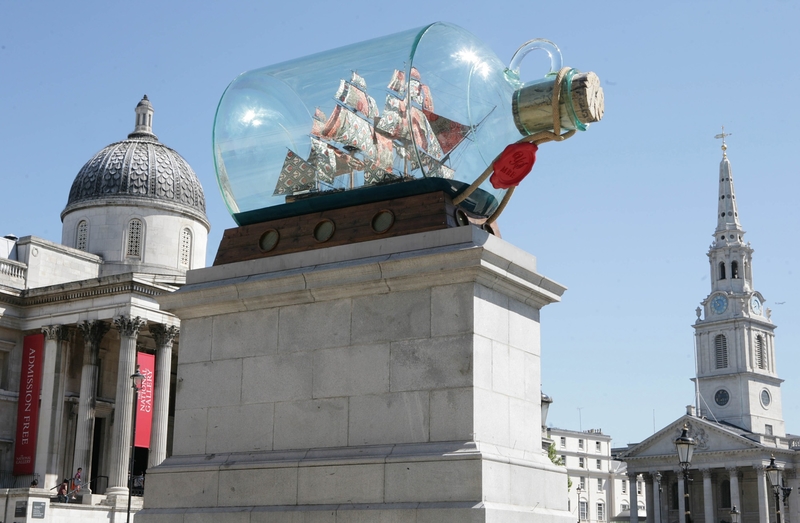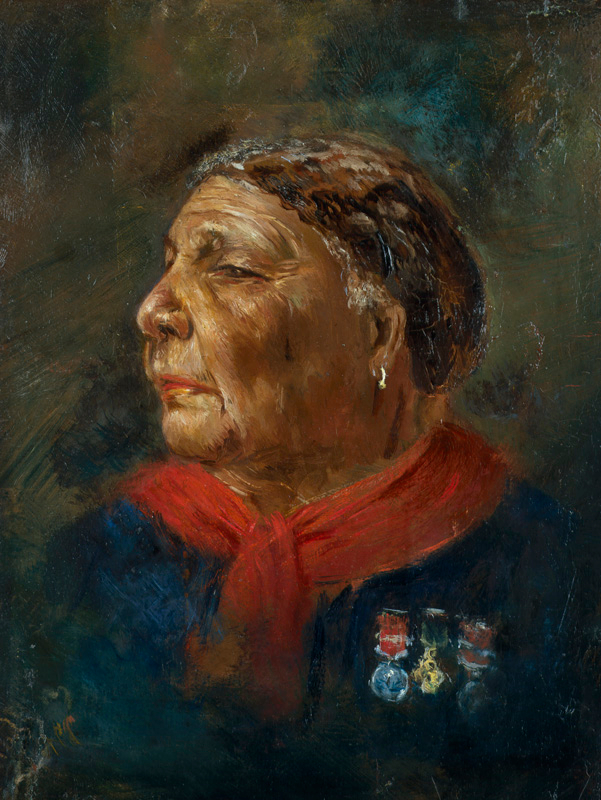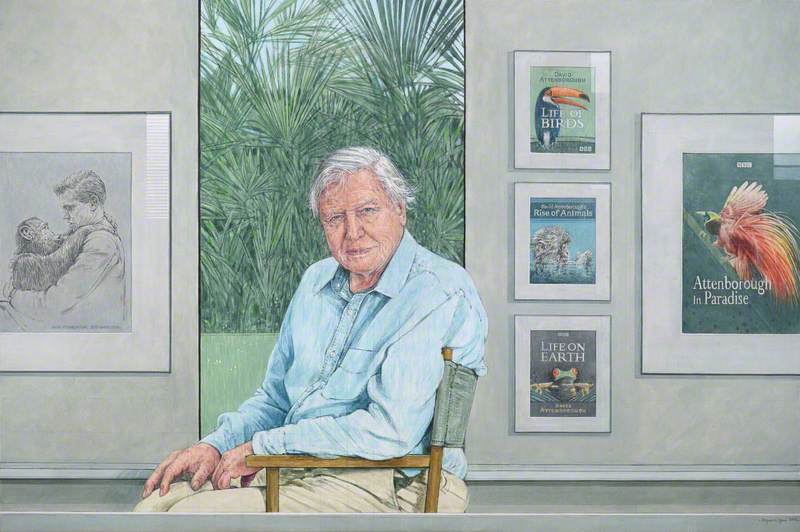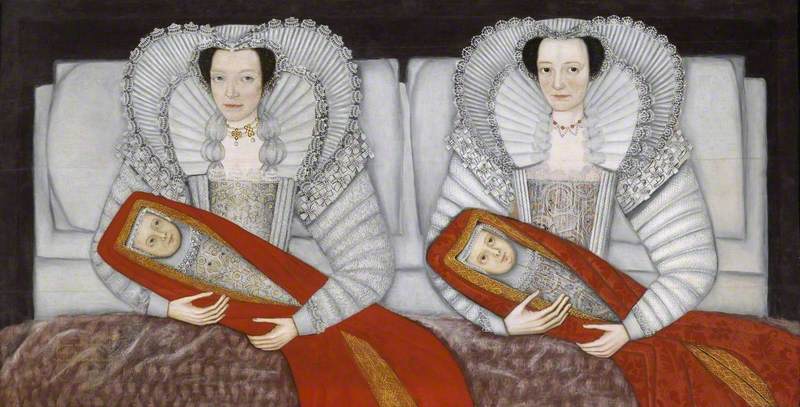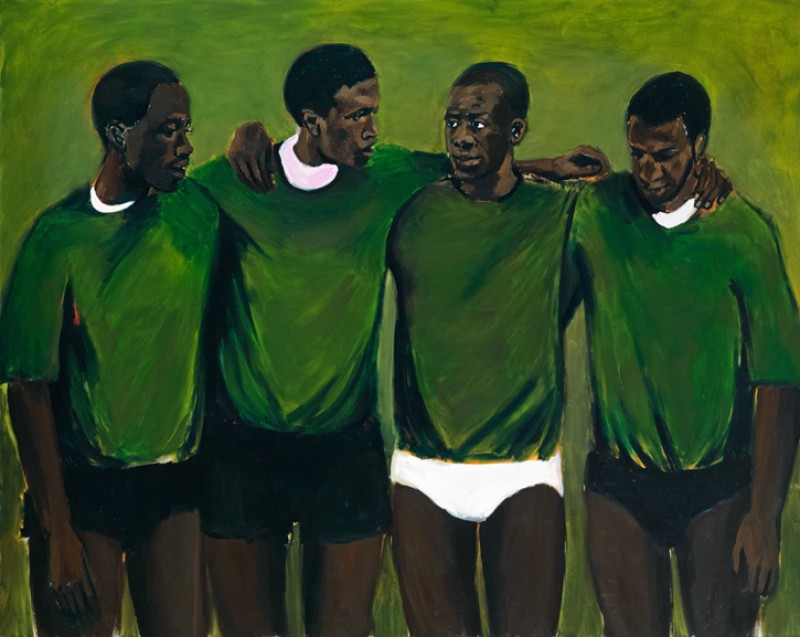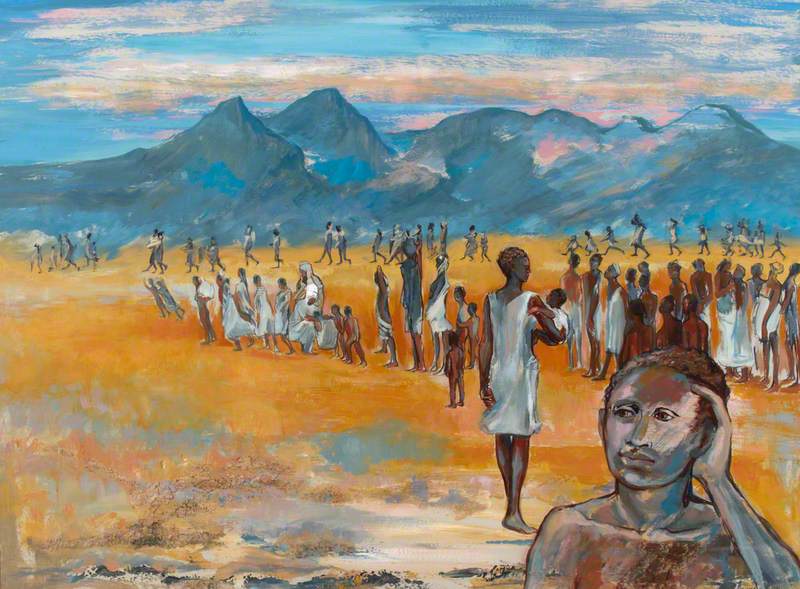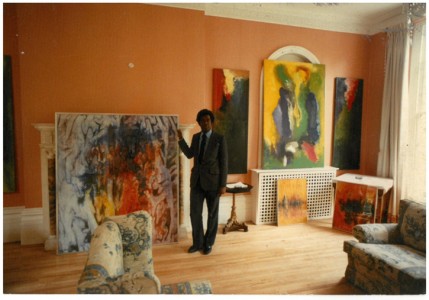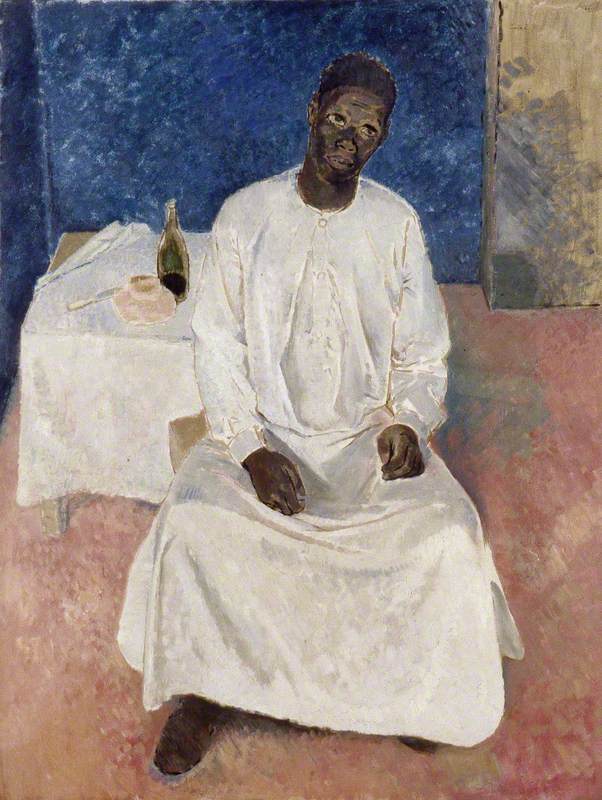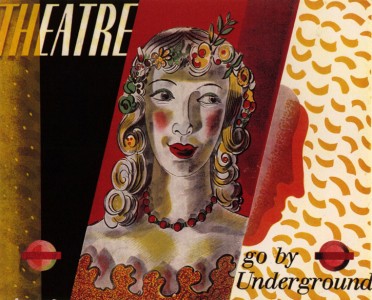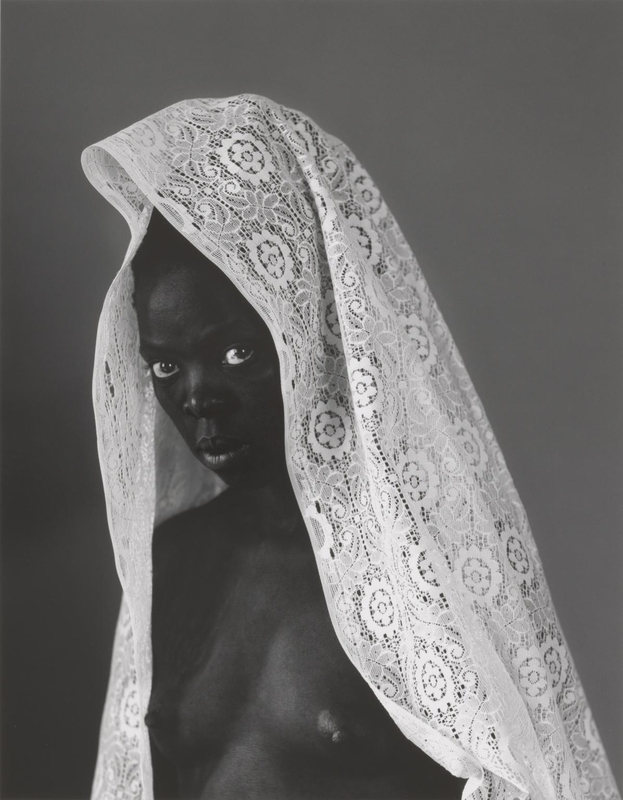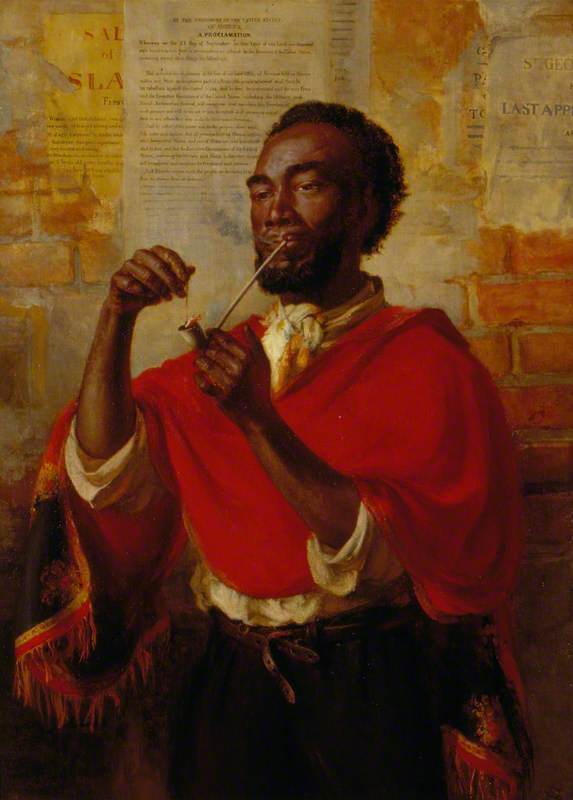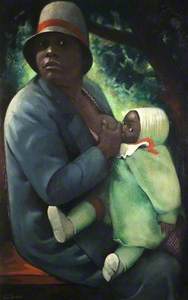This picture was painted in 1931 by Ernst Neuschul, who was born near Prague in 1895 to a Jewish family.
They ran a hardware store, but he trained as an artist in Prague and Vienna and worked in Berlin. Neuschul was a radical socialist and his powerful, provocative paintings of ordinary workers, black people, gypsies and the unemployed celebrate the equality and dignity of all humankind.
Neuschul fled from Germany after the Nazis closed his exhibition and stripped him of his teaching job. He fled again in 1937, after his pictures were daubed with swastikas, leaving on the last train out of Czechoslovakia with his wife and child – but their families died in concentration camps. He lived in England until his death in 1968, changing his name to Ernest Norland and changing his style of painting.
Nothing is known of what happened to this family, but Neuschul's son has an album with a studio photograph of the 'Black Mother' with her husband, baby and toddler, suggesting a valued relationship with them.
The family might have come from the Cameroon, Namibia, Tanzania, Rwanda, Burundi or Togo because these were German colonies from the 1880s until they were given up in the settlement after the First World War. Germany did not have any Caribbean colonies. The number of Africans in Berlin must have been small when the picture was painted. There were around 24,000 Africans, out of a population of 65 million people, in the whole of Germany.
We can only imagine what it must have been like for this mother to bring this child into the world in that place at that time. In 1930 the Nazis made significant gains in the national elections and by 1931 street violence was spiralling out of control. Hitler became Chancellor in January 1933 and German Führer in August 1934. The Nazis were acutely embarrassed when the black African American Jesse Owens won four medals at the 1936 Munich Olympics and 18 African Americans competed. African people in Germany were persecuted during the Third Reich, and many became holocaust victims.
This woman is remarkable not just because of her ethnicity and location, which themselves make her an unusual subject in Western art, but also because of what she is doing: she is wearing fashionable street clothing, out of doors, maybe in a public place, but with her breast exposed, feeding a baby that is big enough to walk – say 12 months old. You can tell this by the heels on her shoes. The 'real' moment is also made more 'real' by the domestic detail of her untied bib.
The woman and child's expressions have often been described as startled surprise – a response to unlooked-for intrusion, and their situation as vulnerable. They are described on the collection website as 'indicating an awareness of apparent threat'. However, I think the mother looks confident and expert, defiantly proud and secure in what she is doing. The feeding baby's steady expression is very true to life. You can feel her mouth momentarily relaxing as she pauses. She will probably start humming or playing around in a minute.
This woman's actions may well have been a product of her upbringing in a country or a community that took breastfeeding until toddlerhood for granted.
For Western Europeans in 1931 however, this would have been a very a shocking image. It is still challenging to many people this century. Respectable women in the West were not and are still not 'supposed' to sit in parks, in their hats, with their breasts exposed, not only feeding embarrassingly large babies, but staring straight at you while they did so, rather than looking into their baby's face, or averting their eyes, pretending not to be doing what they are doing.
Why is there so much resistance to breastfeeding?
The breastfeeding mother and child is a familiar composition in western art, from the many depictions of Jesus and Mary. The challenge perceived by many looking at Neuschul's picture may be in part because it interprets the 'Madonna and Child' image as an ordinary black woman in modern dress looking straight at the viewer, rather than a 'pure' white virgin in 'historical' drapery.
The Virgin and Child before a Firescreen
about 1440
Robert Campin (Master of Flémalle) (c.1375/1379–1444) (follower of) 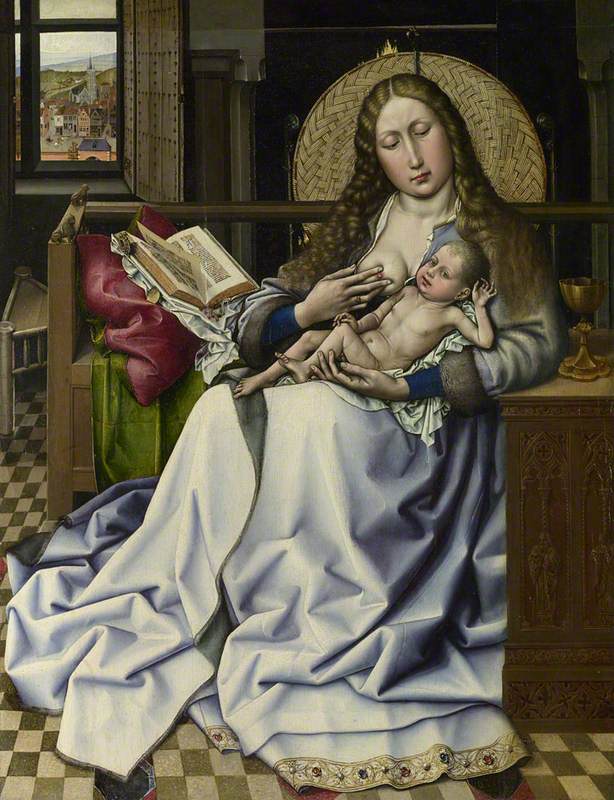
Breastfeeding is associated with goddesses as well as with the Virgin Mary. The Origins of the Milky Way tells the story of Jupiter, King of the Gods, holding the baby Hercules to his sleeping wife Juno's breast. The milk that spurted out formed the Milky Way and dropped to the ground to create lilies.
This type of image raises the act of breastfeeding into something magical and sacred. This makes it special, which is nice, but also maybe 'unobtainable' because it is what goddesses do, not normal women.
In the 1600s some painters of religious scenes began to try and be very realistic, and imagined Jesus as a child of a lowly peasant woman, like this one here. The emphasis on the Virgin Mary breastfeeding was meant to stress that she was a woman of 'lowly birth'. Wealthy women did not have to breastfeed by the roadside: that was what poor people did! Some people even today may still have an unspoken perception, passed down through the generations, that breastfeeding is somehow 'common'.
Historically, affluent women in Western society have not usually breastfed for very long, if at all. They typically paid less affluent women to do it for them. Until the nineteenth century, most families who could afford it sent their newborns away to the country to be nursed for one to two years. This is the natural timescale for breastfeeding, which was essential for the baby's health in the days before adequate substitutes were available. It had other advantages – children got a country upbringing away from the diseases which were rife in towns. The wet nurse could stay at home with their own family, and wet-nursing helped to limit its size as well as being a source of income for her. The Victorians preferred to keep their babies at home, and so wet nurses lived in or travelled to work.
The Visit to the Wet Nurse
1770–1775
Jean-Honoré Fragonard (1732–1806) 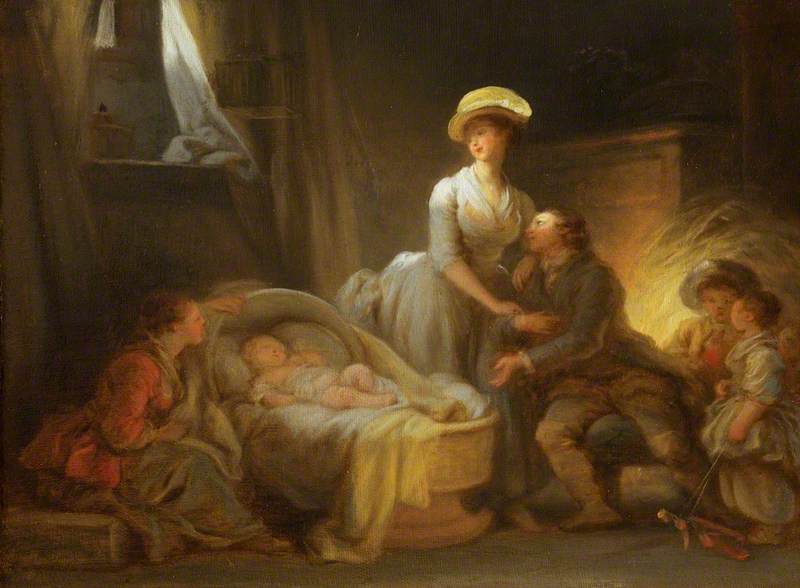
At the end of the nineteenth century bottle-feeding quickly became popular with wealthy families. Whilst it was initially expensive, and still involved employing servants to look after their babies, it was made possible by pasteurisation, refrigeration, clean water, and better understanding of hygiene. Wet nursing died out in England by the 1930s, but continued in Europe. An Austrian author wrote of Vienna at the time Black Mother was painted:
'When I was a small child, when I was taken for a walk, I would frequently encounter young, plump peasant women in high boots, colourfully embroidered skirts and bonnets with streamers. These women came from Moravia, Bohemia, the Hanakei and Slovakia... all areas that traditionally supplied the capital with cheap labour. The Slavic populations were considered inferior and deemed fit primarily for physical labour, of which wet nursing was but one form... In Austria, as elsewhere in Europe, wet nursing, like prostitution, was one of the two ever-available sources of income for poor young women.' (i)
It is tantalising to imagine that the 'Black Mother' herself was also a wet nurse – since it was still practised in this part of Europe – but we will likely never know. At around this time black American women were still employed as wet nurses for white American babies.
Whilst many women did (and still do) feed other women's babies out of kindness, professional wet-nursing was often problematic, for the nursing mother, her employer, and her own baby. It often meant a mother left her family to live as a servant in her employer's home, usually without her own child. The practice has gone from popular memory today, but in the twentieth century it must have been remembered by elderly people from wet-nurses' families and from the wealthy families who employed them. This may well have been an unacknowledged factor in the distaste for breastfeeding which has made bottle-feeding so popular with working-class mothers ever since it was first cheap enough for them to afford it. Another factor was that bottle milk is richer than breast milk, meaning a baby needs to be fed less frequently.
For most ordinary married Victorian women who were not rich enough to pay wet nurses or, later on, who could not afford to safely feed their babies with bottled milk, the prolonged breastfeeding involved in rearing large families was a way of life, as it had been for millennia.
Twentieth-century changes in dress reflected changes in baby-feeding practices. Until the First World War, mainstream Western female clothing reflected this need for most women to breastfeed for large proportions of their adult lives. Their clothes had front fastenings, as they had always done, and corsets ended below the nipple to allow easy access for feeding.
In the 1920s mass fashion changed radically for women: for the first time, back fastenings were general. Corsets which stopped below the nipple were replaced by bras and corselets which didn't. It was no longer possible to feed babies wearing ordinary underwear, but instead it was necessary to buy special garments. Even though a front fastening dress was still acceptable, it was not fashionable.
One potential reason for the change in fashion is rarely mentioned: bottle-feeding. We can pinpoint from Western clothing styles the moment when breastfeeding ceased to be part of the cultural identity of the mass of our population, and bottle-feeding became at least a realistic aspiration, if not a reality, for most Western mothers.
Scant information is available mapping the trend towards bottle-feeding in the early twentieth century. Official statistics from the USA suggested that in the early 1930s, 30 per cent of babies were bottle-fed from birth, and 60 per cent were bottle-fed by six months of age. (ii)
By the time Neuschul painted Black Mother in 1931, it is therefore likely that about half of all babies in European cities were breastfed, and even fewer babies were fed until they started to walk. It is likely that more affluent families were the 'early adopters' of bottle-feeding, and poorer women, on the fringes of society, were still breastfeeding. This would have made Neuschul's picture all the more shocking when it was first painted.
The significance and meaning of Neuschul's painting
If so many of his paintings had not been destroyed by the Nazis, Ernst Neuschul would have been much better known. This comparison with Renoir's 1885 picture of his wife and child shows his stature as one of our great painters. It shows two very different ways of looking at the same theme: Renoir depicts his wife in country dress, not town clothes. She looks at us with the intimacy and love of a wife to a husband, while the baby gazes contentedly at his father. It is a rural idyll, but with another charming domestic detail – the quilted mat under the child was used as protection from little accidents in the days before waterproof pants! Like Renoir's picture, Neuschul's Black Mother sits well in one of the great themes of Western art in modern times – the mother and child, the Madonna, the Goddess, the Universal Mother, the essential Woman.
But Neuschul's picture brought a tantalising new dimension to this old concept, which immeasurably strengthened its challenge to Nazi ideology, and raised the importance of its message to the world today, already significant, to an epic level. In 1931, the year the 'Black Mother' was painted, Louis Leakey found one of the world's oldest manmade tools in the Olduvai Gorge, Tanzania, and presented it to the British Museum. We may never know if Neuschul had this in mind when he painted Black Mother, his fundamental anthem to motherhood, but this 1.8 million-year-old object proved that modern humanity did not arise from a supreme Aryan race, but began in Africa. This sensational discovery made headline news, and the world knew for the first time that Africa was indeed the mother of all nations.
Sarah Levitt, Head of Leicester Arts and Museums Service
This article was first published on Leicester's German Expressionist Collection website.
(i) Valerie Fildes, Breasts, Bottles and Babies: A History of Infant Feeding, Edinburgh University Press, 1986
(ii) C. Hirschman and G. E. Hendershot, Trends in breastfeeding amongst American mothers. Vital and Health Statistics Series 23, No.3. Department of Health, Education and Welfare, Hyattsville, 1979

